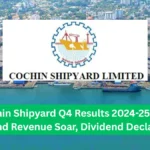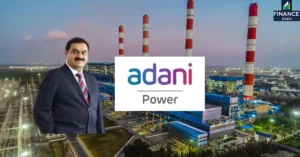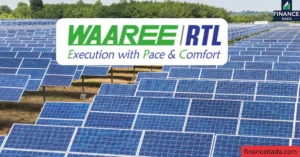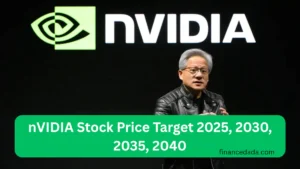ONGC Share Price Target & Forecast 2025–2030: A Stable PSU Investment?
ONGC Share Price Target & Forecast 2025–2030: Oil and Natural Gas Corporation Limited (NSE: ONGC), India’s largest crude oil and natural gas producer, is a Maharatna PSU under the Ministry of Petroleum and Natural Gas. As of July 5, 2025, its share price is approximately ₹244, with a market cap of ₹308,154 crore, reflecting a 13.6% decline over the past year. Despite recent volatility, ONGC’s robust fundamentals, high dividend yield, and renewable energy initiatives make it a compelling long-term investment. This guide provides detailed share price targets for 2025–2030, blending fundamental and technical analysis, and recommends best books for stock market to enhance your investment strategy.
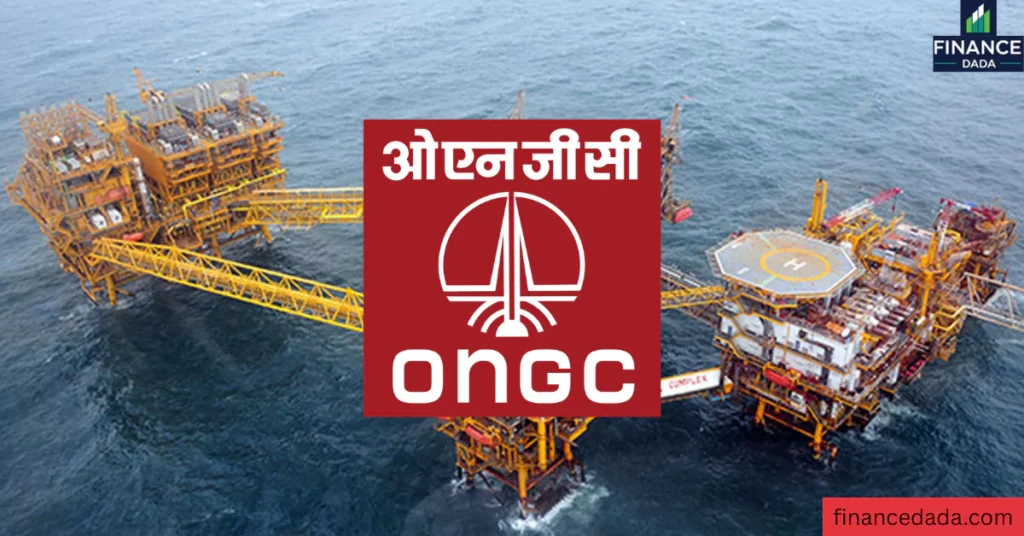
ONGC Overview
Founded in 1956, ONGC dominates India’s energy sector, contributing ~71% of the country’s crude oil and ~84% of its natural gas production. Operating onshore and offshore, ONGC produces value-added products like LPG, naphtha, and kerosene. Its subsidiary, ONGC Videsh Limited (OVL), extends its reach to 15 countries, including Vietnam and Russia. ONGC is also investing in renewable energy (solar, wind, hydrogen) to align with India’s Net Zero goal by 2070.
Key Company Highlights
- Market Leadership: Largest E&P company in India, with 45.35 MMTOE production in FY21.
- Financials: Q4 FY25 revenue of ₹170,811.73 crore (+2.42% YoY), net profit of ₹7,322.82 crore (-27% YoY), FY25 profit of ₹38,329 crore.
- Promoter Holding: 58.89% (Government of India), with FIIs at 8.68% and DIIs at 8.27%.
- Dividend Yield: 5.02% (₹12.25 per share in FY25), among the highest for PSUs.
- Recent Developments: Successfully capped a blowout at Well RDS#147A on June 27, 2025, ensuring operational safety.
ONGC Share Price Target 2025
Analysts project ONGC’s share price to range between ₹257–₹375, averaging ₹316, implying a 15–23% upside from ₹244. Optimistic targets reach ₹375 (Jefferies).
Key Drivers
- KG Basin Output: 10–15% production growth from KG DW 98/2 block in FY25–26.
- Crude Oil Prices: Brent crude at $75–90/barrel supports revenue.
- Brokerage Ratings: JM Financial (₹325, Buy), YES Securities (₹391, Buy), Anand Rathi (₹405, Buy).
- Dividend Appeal: 5.02% yield attracts income-focused investors.
Technical Outlook
- Moving Averages: Below 200-day SMA (₹260) but above 50-day SMA (₹240), indicating short-term support.
- RSI: Neutral (30–70), with a bullish breakout above ₹252 on high volume.
- Support/Resistance: Support at ₹234–242, resistance at ₹246–250.
2025 Price Target Table
| Period | Low Target | High Target | Average Target |
|---|---|---|---|
| Start of 2025 | ₹257.00 | ₹310.00 | ₹283.50 |
| Mid-2025 | ₹281.00 | ₹345.00 | ₹308.00 |
| End of 2025 | ₹300.00 | ₹375.00 | ₹316.00 |
ONGC Share Price Target 2026
The share price is projected to range between ₹260–₹400, averaging ₹330.
Growth Catalysts
- Production Growth: Reversed declining output, with premium gas pricing at $7.80/mmbtu for new wells.
- Renewable Energy: Investments in solar, wind, and hydrogen diversify revenue.
- Technical Signals: Rectangle range breakout above ₹252 targets ₹300 (TradingView).
Risks
- Oil Price Volatility: 5% stock drop due to crude price decline from Israel-Iran ceasefire talks (June 2025).
- Earnings Miss: Q4 FY25 EPS of ₹5.10 vs. ₹7.30 expected (-30.13% surprise).
ONGC Share Price Target 2027
Analysts expect a share price range of ₹310–₹450, averaging ₹380.
Key Factors
- Global Expansion: ONGC Videsh’s operations in Vietnam, Norway, and Egypt boost revenue.
- Financial Stability: Debt-to-equity ratio of 0.45 and 37.9% dividend payout ratio.
- Analyst Sentiment: ICICI Securities (₹360, Buy) highlights premium gas pricing.
ONGC Share Price Target 2028
The share price could range between ₹360–₹500, averaging ₹430.
Strategic Moves
- Jindal Drilling Contract: $35,138.71/day rig contract for 3 years from Q3 FY26.
- Sustainability: Carbon capture and green hydrogen initiatives.
- Analyst Outlook: Money Mint predicts ₹420, driven by production growth.
ONGC Share Price Target 2029
The share price is forecasted to range between ₹400–₹550, averaging ₹475.
Long-Term Drivers
- Exploration Success: Discovered 8 of India’s 9 active basins since 1958.
- Government Support: 58.89% promoter holding ensures policy stability.
- Global Demand: Rising energy needs in Asia and Africa.
ONGC Share Price Target 2030
By 2030, ONGC’s share price could range between ₹450–₹600, averaging ₹525.
Growth Outlook
- Renewable Pivot: Investments in clean energy to mitigate fossil fuel risks.
- Production Scale: Targeting 50 MMTOE annually by 2030.
- Analyst Forecasts: Walletinvestor predicts ₹753.64, with X posts suggesting ₹375 (Jefferies).
Price Target Summary Table (2025–2030)
| Year | Low Target | High Target | Average Target | Key Catalyst |
|---|---|---|---|---|
| 2025 | ₹257.00 | ₹375.00 | ₹316.00 | KG Basin output |
| 2026 | ₹260.00 | ₹400.00 | ₹330.00 | Renewable energy |
| 2027 | ₹310.00 | ₹450.00 | ₹380.00 | Global expansion |
| 2028 | ₹360.00 | ₹500.00 | ₹430.00 | Sustainability initiatives |
| 2029 | ₹400.00 | ₹550.00 | ₹475.00 | Exploration success |
| 2030 | ₹450.00 | ₹600.00 | ₹525.00 | Production scale |
Why Invest in ONGC?
ONGC’s dominant position, high dividend yield, and renewable energy focus make it a stable PSU investment, though oil price volatility and operational challenges require caution.
Investment Advantages
- Market Dominance: Contributes 71% of India’s crude oil and 84% of natural gas production.
- Financial Health: FY25 profit of ₹38,329 crore, P/E of 8.04 vs. sector average of 15.96.
- Dividend Yield: 5.02% (₹12.25 per share), ideal for income investors.
- Analyst Support: 27 analysts rate “Buy,” with targets of ₹281–₹375.
Risks to Consider
- Oil Price Sensitivity: 5% stock drop amid crude price decline (June 2025).
- Operational Issues: Gas leak at Rudrasagar well (June 2025) raised safety concerns.
- Low ROE: 13.6% over 3 years vs. industry average of 15%.
Recommended Finance Books for Stock Market Success
To analyze stocks like ONGC, consider these best books for stock market:
- The Intelligent Investor by Benjamin Graham: A best finance book for evaluating ONGC’s fundamentals using value investing principles.
- One Up on Wall Street by Peter Lynch: A good book on stock market for spotting PSU growth opportunities.
- Technical Analysis Explained by Martin Pring: A great finance book for analyzing ONGC’s chart patterns, like Rectangle breakouts.
- Stock Investing for Dummies by Paul Mladjenovic: A book for beginners in stock market to understand volatility and risk.
- The Little Book of Common Sense Investing by John Bogle: A financial management book for long-term strategies.
Book Recommendations Table
| Book Title | Author | Best For | Keywords |
|---|---|---|---|
| The Intelligent Investor | Benjamin Graham | Value Investors | Best finance books, recommended finance books |
| One Up on Wall Street | Peter Lynch | Beginners | Books for beginners in stock market, good finance books |
| Technical Analysis Explained | Martin Pring | Technical Traders | Best books for stock market, good book on stock market |
| The Little Book of Common Sense Investing | John Bogle | Long-Term Investors | Best finance books, financial management book |
Additional Factors Driving ONGC’s Growth
Strategic Initiatives
- KG Basin: 10–15% production growth from DW 98/2 block by FY26.
- Renewable Energy: Solar, wind, and hydrogen projects to reduce carbon footprint.
- Global Operations: ONGC Videsh’s presence in 15 countries boosts revenue.
Macroeconomic Tailwinds
- Energy Demand: India’s peak demand to hit 270 GW in 2025.
- Government Backing: 58.89% promoter holding ensures policy support.
- Crude Prices: OPEC+ support at $75–90/barrel benefits realizations.
Technical Analysis Insights
- Bullish Patterns: Inverse Head & Shoulders breakout above ₹252 targets ₹300.
- Support Zone: ₹234–242, ideal for accumulation.
- Volatility Risk: Weakness below ₹240 could target ₹236.
How to Invest in ONGC Shares
- Open a Demat Account: Use Zerodha, INDmoney, or Upstox.
- Read Finance Books: Study best books about finances like The Intelligent Investor for valuation techniques.
- Analyze Fundamentals: Check P/E (8.04), EPS (₹28.74), and dividend yield (5.02%).
- Monitor Technicals: Use TradingView for patterns like Inverse Head & Shoulders.
- Start with SIPs: Invest ₹5,000–₹10,000 monthly to manage volatility.
- Consult Advisors: Seek professional guidance due to market risks.
ONGC Share Price Target FAQ
Q1: What is ONGC’s share price target for 2025?
A: Analysts predict ₹257–₹375, averaging ₹316.
Q2: Is ONGC a good long-term investment?
A: Likely, due to its market leadership and dividends, but oil price volatility poses risks.
Q3: Why has ONGC’s share price declined recently?
A: A 5% drop in June 2025 due to crude price declines and a Q4 FY25 earnings miss.
Q4: What are ONGC’s growth drivers?
A: KG Basin output, renewable energy, and global expansion via ONGC Videsh.
Q5: What is ONGC’s P/E ratio?
A: 8.04, below the sector average of 15.96, suggesting undervaluation.
Q6: Does ONGC pay dividends?
A: Yes, ₹12.25 per share in FY25, yielding 5.02%.
Q7: Which finance books help analyze ONGC?
A: Best finance books like Technical Analysis Explained and One Up on Wall Street offer tools for technical and fundamental analysis.
Conclusion
ONGC remains a stable PSU investment with a projected share price target of ₹257–₹375 for 2025, driven by strong fundamentals, a 5.02% dividend yield, and renewable energy initiatives. Despite risks like oil price volatility and operational challenges, its market leadership and government backing make it attractive. Enhance your investment strategy with top finance books like The Intelligent Investor and One Up on Wall Street, and use platforms like Zerodha or TradingView to apply these insights. Start small, stay informed, and consult a financial advisor to navigate ONGC’s potential in 2025 and beyond.
Aslo Read: 10 Best Personal Finance Books Of All Time to Master Your Money in 2025,
Disclaimer: Stock market investments carry risks. Past performance does not guarantee future results. Consult a financial advisor before investing. Data sourced from Moneycontrol, Economic Times, TradingView, and Screener.in (July 2025).


